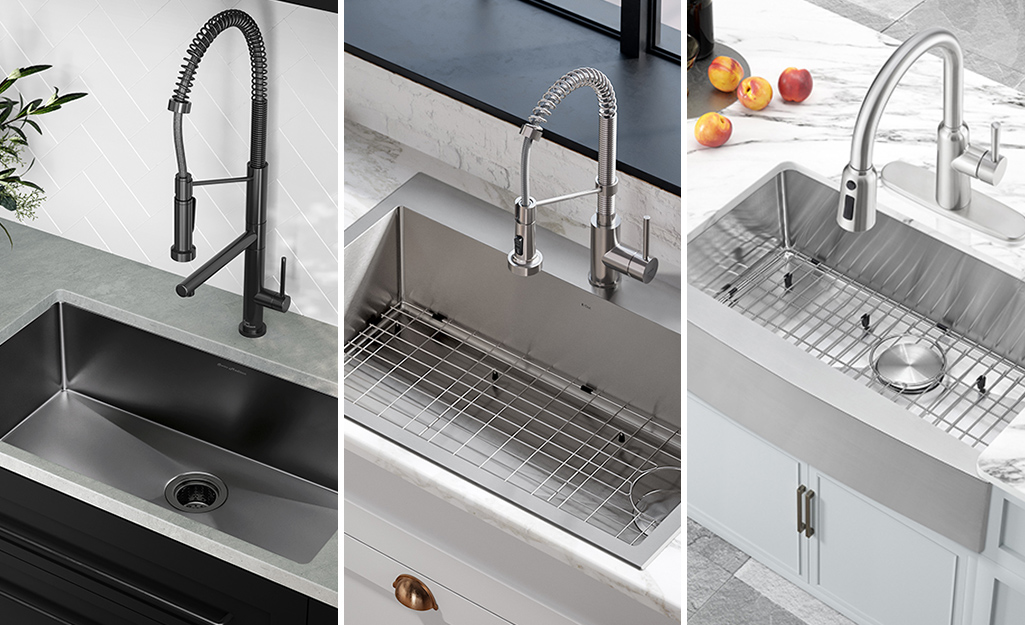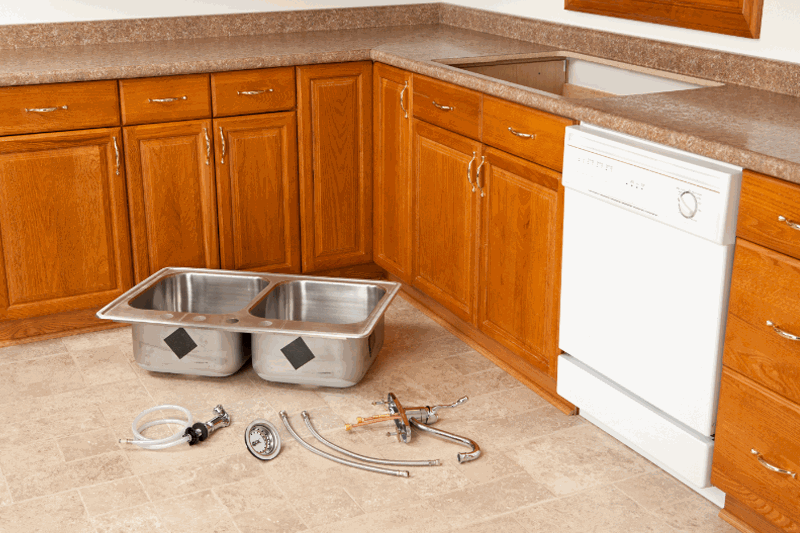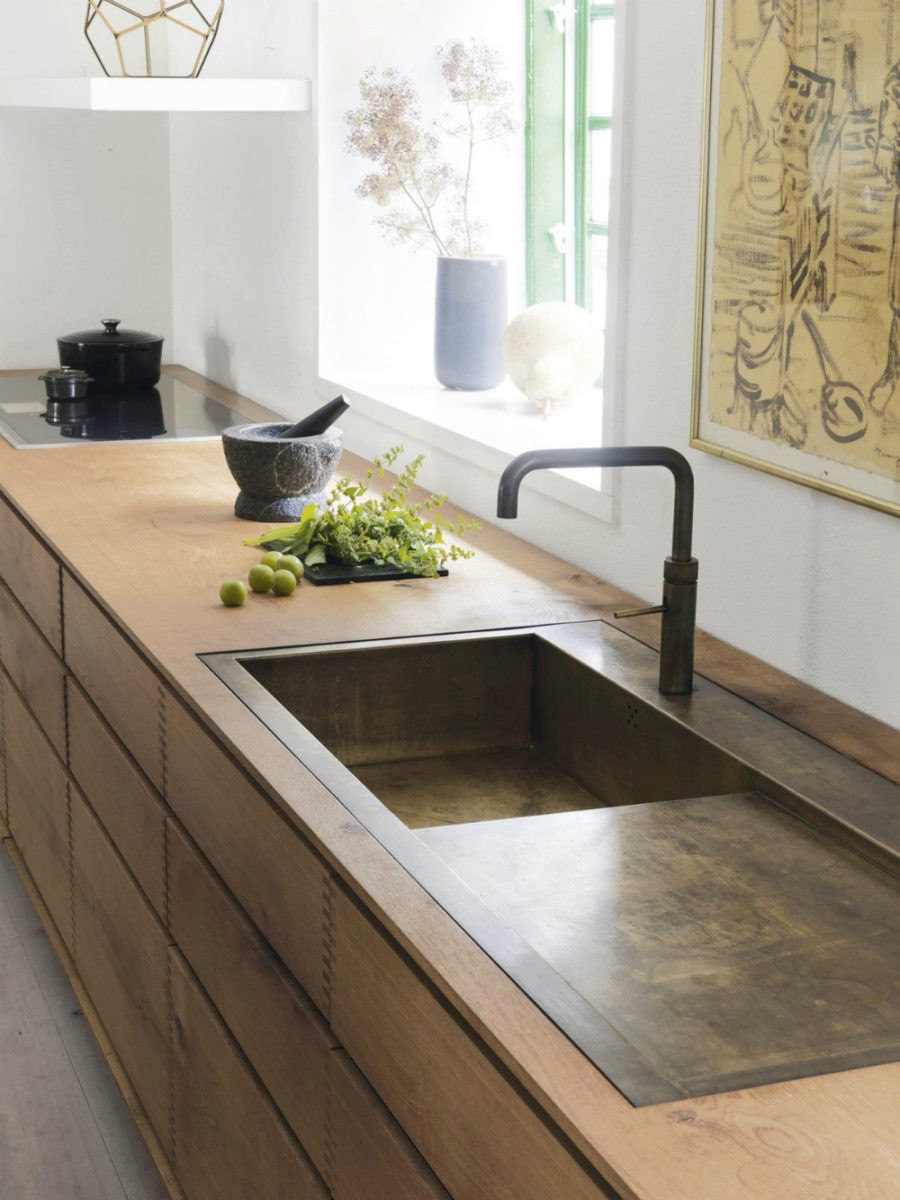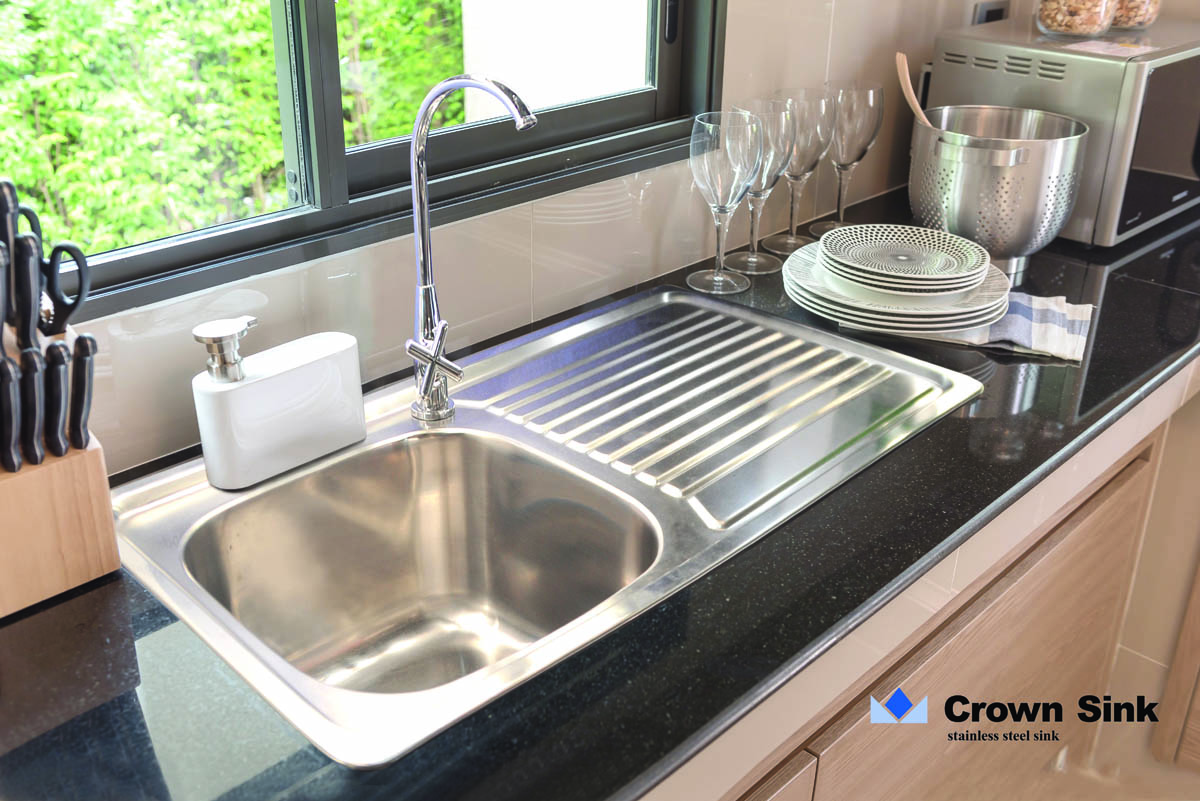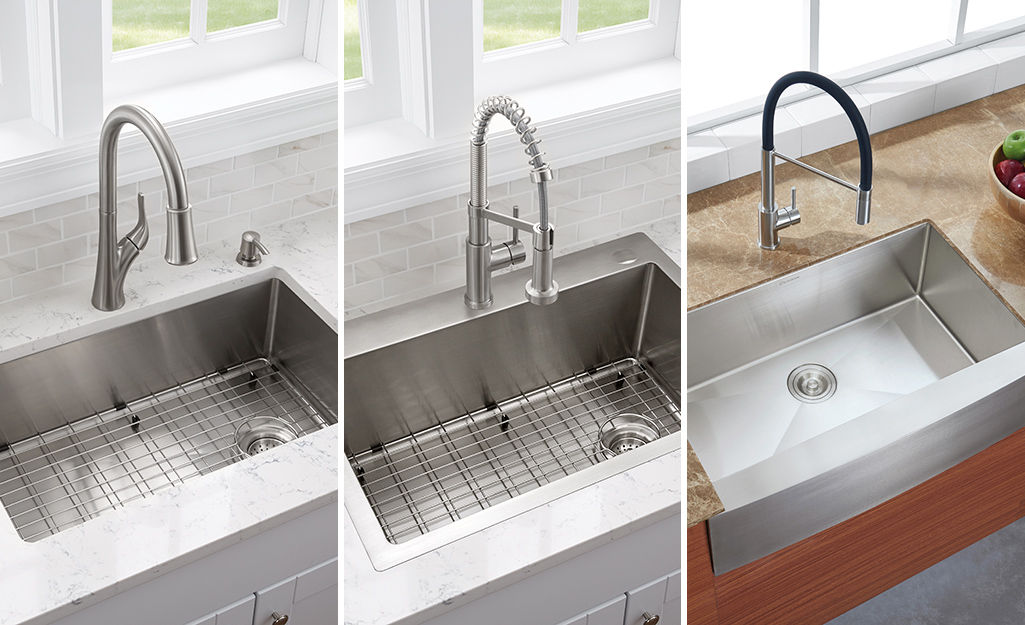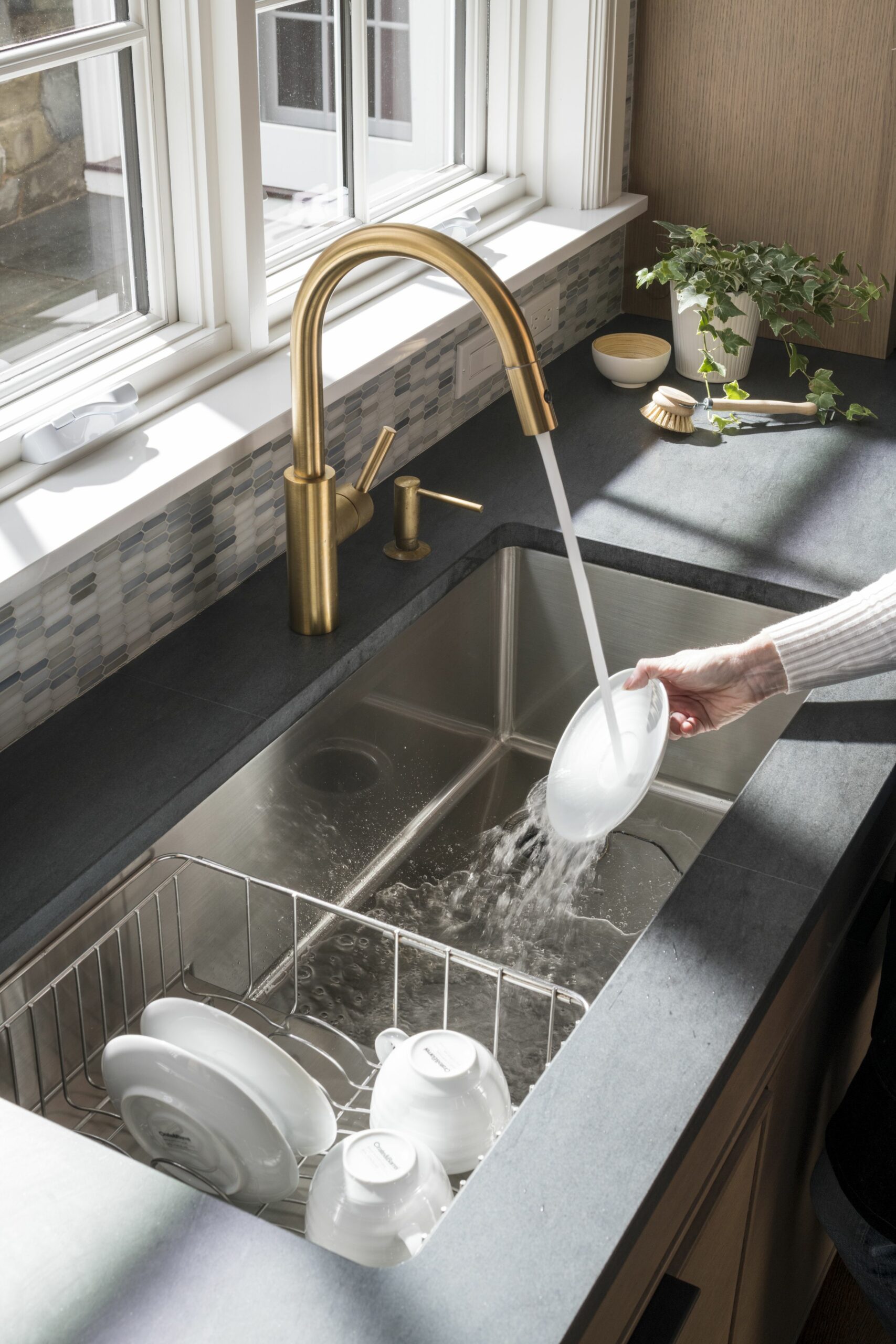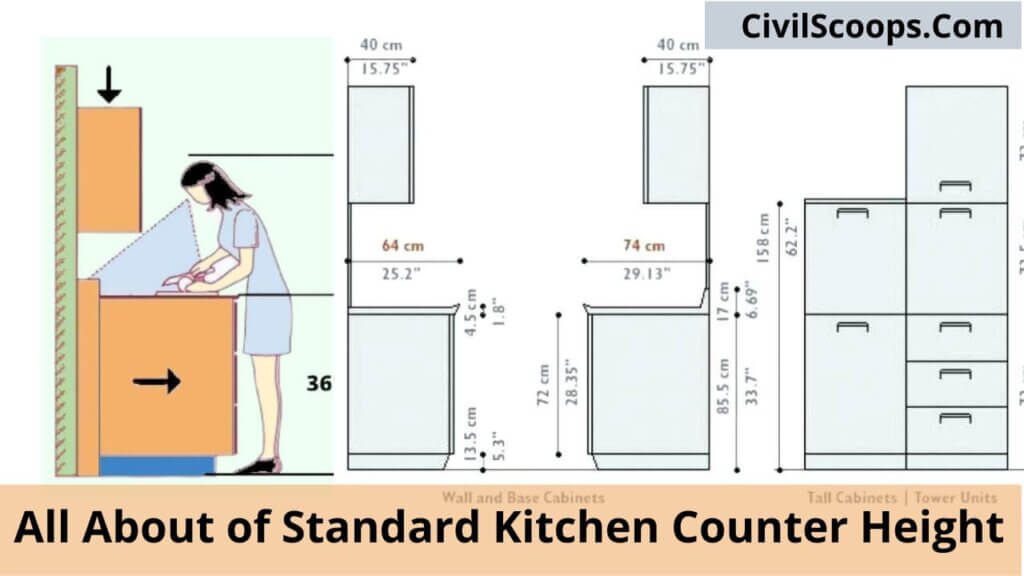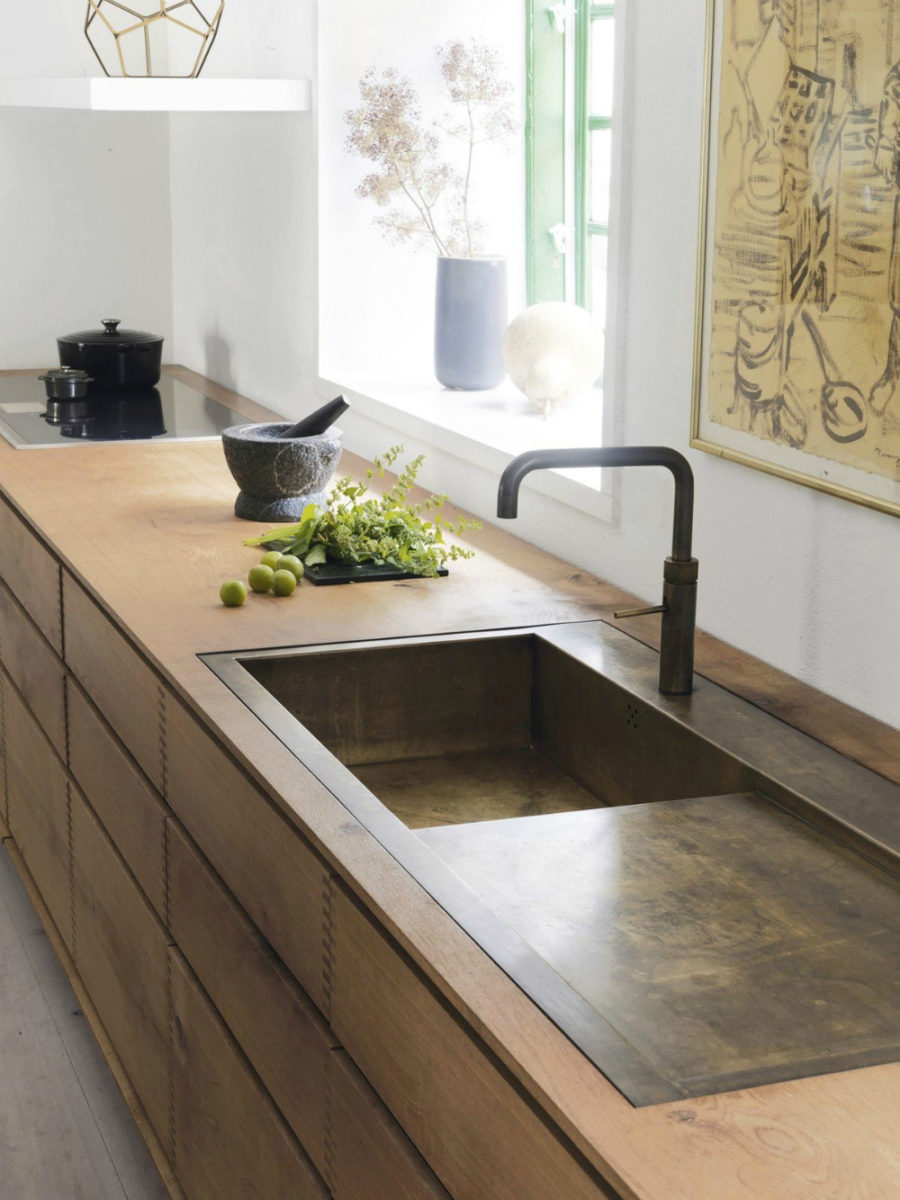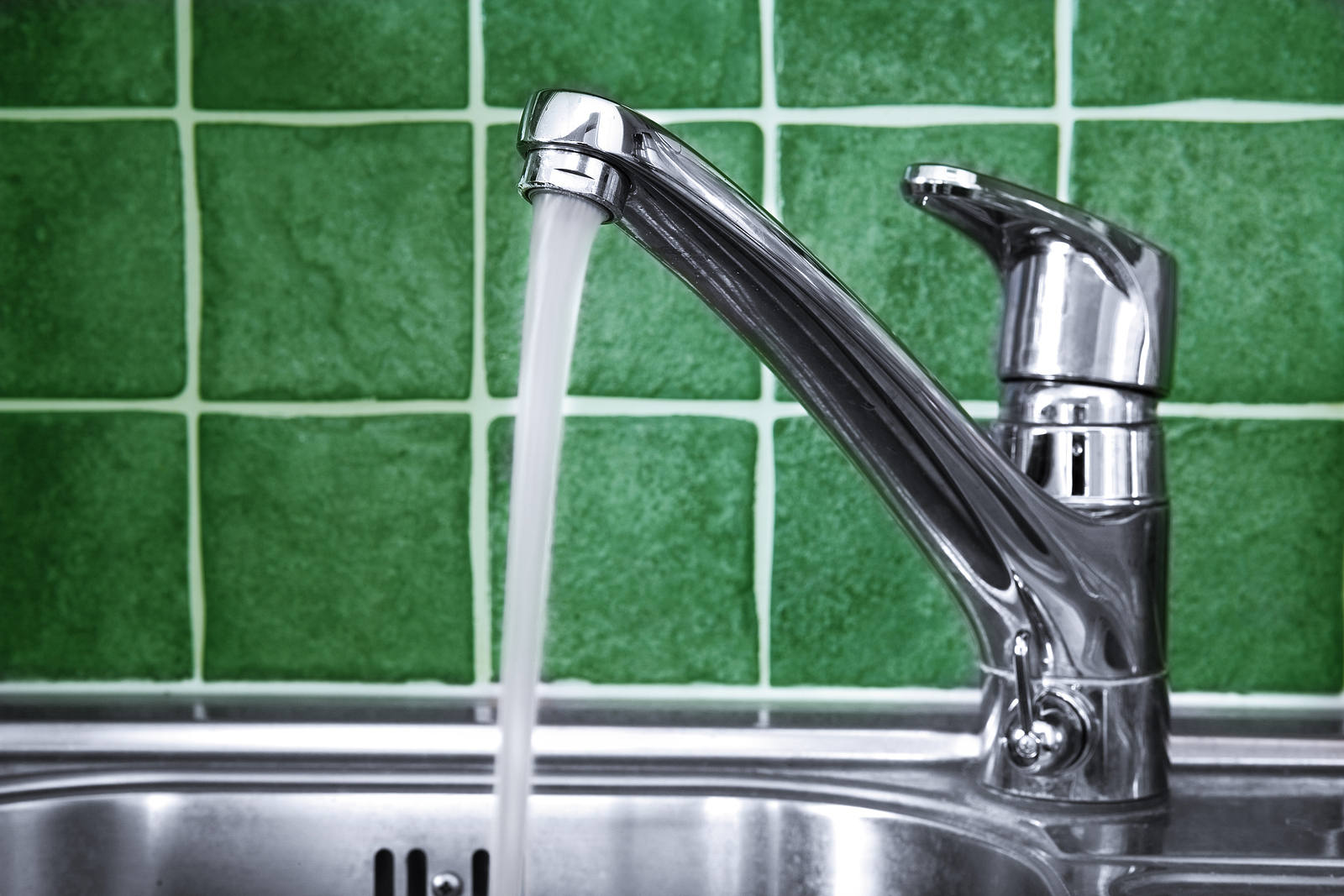Are you ready to upgrade your kitchen with a new sink? Before you start shopping for the perfect one, it's important to have accurate measurements of your space. This will ensure that you choose a sink that fits perfectly and functions seamlessly. Follow these steps for a stress-free measuring process: Step 1: Clear the area Before you can start measuring, make sure your kitchen sink area is clear of any clutter or dishes. This will give you a better view of the sink and surrounding countertop space. Step 2: Measure the cabinet width The first measurement you'll need is the width of your cabinet where the sink will be installed. Use a measuring tape to get an accurate number, measuring from the inside of the cabinet on one side to the inside of the cabinet on the other side. Step 3: Measure the depth of the cabinet Next, measure the depth of the cabinet from the back wall to the front of the cabinet. This will help determine the maximum size of sink you can install. Step 4: Measure the distance between the cabinet and wall If your sink will be installed against a wall, measure the distance between the back of the cabinet and the wall. This will ensure that the sink doesn't stick out too far or get obstructed by the wall. Step 5: Measure the sink opening Use a measuring tape to determine the length and width of the opening in your countertop where the sink will be installed. Be sure to measure from the inside of the opening for accuracy. Step 6: Measure the depth of the sink The depth of the sink is an important measurement to consider, especially if you plan on installing a garbage disposal or other accessories. Measure from the top of the sink to the bottom to get the depth measurement. Step 7: Check for any obstructions Before finalizing your measurements, make sure there are no obstructions such as pipes or electrical outlets that may interfere with the installation of the sink. If you come across any, make note of their location and adjust your measurements accordingly.1. Measuring for a new kitchen sink: A step-by-step guide
Taking accurate measurements for a new kitchen sink may seem like a daunting task, but these tips and tricks can help make the process easier: Tip 1: Use a laser level A laser level can be a useful tool for measuring the depth of your cabinet and sink opening. This will provide a straight and accurate line for your measurements. Tip 2: Measure twice, cut once It's always a good idea to double check your measurements before making any cuts or purchases. This will save you from having to make any costly adjustments later on. Tip 3: Consider the faucet placement When measuring for a new sink, keep in mind where your faucet will be placed. This will help determine the size and shape of sink that will work best for your space. Tip 4: Take note of any special features If you plan on installing a sink with special features such as a cutting board or built-in soap dispenser, make sure to measure for these as well to ensure a perfect fit. Tip 5: Don't forget about the drain When measuring for a new sink, it's important to consider the location of the drain. Make sure the sink you choose has a drain placement that lines up with your existing plumbing.2. How to measure for a new kitchen sink: Tips and tricks
Accurate measurements are crucial when it comes to installing a new kitchen sink. Here's why: Proper fit Having accurate measurements ensures that your new sink will fit perfectly in your space. This will prevent any gaps or awkward spaces between the sink and countertop, providing a seamless and professional look. Functionality Accurate measurements also ensure that your sink will function properly. If a sink is too big for the space, it may interfere with nearby appliances or cabinets. If it's too small, it may not provide enough room for washing dishes or preparing meals. Cost-effectiveness By taking accurate measurements, you can avoid purchasing a sink that doesn't fit or having to make costly adjustments to your space. This will save you time and money in the long run.3. The importance of accurate measurements for a new kitchen sink
When it comes to measuring for a new kitchen sink, there are a few common mistakes that can be easily avoided: Mistake 1: Not measuring the opening correctly It's important to measure the opening for your sink from the inside, not the outside. This will provide a more accurate measurement and ensure a proper fit. Mistake 2: Not accounting for accessories If you plan on installing any accessories such as a garbage disposal or soap dispenser, make sure to measure for these as well. This will ensure that your sink has enough space for these additional features. Mistake 3: Ignoring obstructions Before finalizing your measurements, make sure to check for any obstructions such as pipes or outlets that may interfere with the installation of your new sink. This will save you from any headaches during the installation process.4. Measuring for a new kitchen sink: Common mistakes to avoid
When measuring for a new kitchen sink, there are a few important factors to consider: Size and shape The size and shape of your sink will depend on your personal preferences and the layout of your kitchen. Consider the size of your space and how you typically use your sink when deciding on the right size and shape. Material From stainless steel to porcelain, there are many different materials to choose from when it comes to kitchen sinks. Consider your budget and the overall style of your kitchen when selecting a material. Mounting options There are various mounting options for kitchen sinks, including top-mount, undermount, and farmhouse. Each option has its own benefits and considerations, so make sure to research which one would work best for your space.5. What to consider when measuring for a new kitchen sink
To accurately measure for a new kitchen sink, you will need the following tools: Measuring tape A measuring tape is essential for getting accurate measurements of your cabinet, sink opening, and sink depth. Laser level A laser level can be helpful for measuring the depth of your cabinet and sink opening, providing a straight and accurate line. Pencil and paper It's always a good idea to have a pencil and paper handy to write down your measurements and make any notes or adjustments.6. Measuring for a new kitchen sink: Tools you'll need
If you're a visual learner, watching a video tutorial can be helpful when it comes to measuring for a new kitchen sink. Check out this video for a step-by-step guide: [Insert link to video tutorial]7. How to measure for a new kitchen sink: Video tutorial
When shopping for a new kitchen sink, it's important to know the standard sizes and dimensions to ensure a proper fit. Here are some common measurements to keep in mind: Standard sink width: 22-33 inches Standard sink depth: 8-10 inches Standard sink length: 24-33 inches Standard sink opening width: 14-20 inches Standard sink opening length: 14-20 inches8. Measuring for a new kitchen sink: Standard sizes and dimensions
When it comes to kitchen sinks, you have the option of choosing a pre-made sink or having one custom-made to your specific measurements. Here are some things to consider when deciding between the two: Custom sinks Pros: Custom sinks allow for a perfect fit and can be made with specific features and materials to fit your needs and style. Cons: Custom sinks can be more expensive and may take longer to receive. Pre-made sinks Pros: Pre-made sinks are typically more affordable and readily available for purchase. Cons: Pre-made sinks may not fit perfectly in your space and may not have the exact features or materials you desire.9. Measuring for a new kitchen sink: Custom vs. pre-made options
Finally, when it comes to measuring for a new kitchen sink, you may be wondering whether to hire a professional or tackle the project yourself. Here are some things to consider: Professional installation Pros: Hiring a professional ensures that the measurements and installation will be done correctly and efficiently. Cons: Professional installation can be more expensive and may require scheduling appointments and coordinating with the installer. DIY installation Pros: DIY installation can save you money and give you a sense of accomplishment. Cons: DIY installation may be more time-consuming and may result in costly mistakes if measurements are not accurate. With these tips and tricks, you'll be well-equipped to measure for a new kitchen sink and choose the perfect one for your space. Don't forget to double check your measurements and consider all factors before making your purchase. Happy sink shopping!10. Measuring for a new kitchen sink: Professional vs. DIY approach
Importance of Choosing the Right Kitchen Sink

Efficiency in Daily Tasks
 Choosing the right kitchen sink is an essential factor in creating a functional and efficient kitchen. As the main workspace for food preparation and cleaning, the sink should be able to accommodate your daily tasks with ease.
Measuring for a new kitchen sink is crucial in ensuring that it fits perfectly in your kitchen and meets your specific needs.
Choosing the right kitchen sink is an essential factor in creating a functional and efficient kitchen. As the main workspace for food preparation and cleaning, the sink should be able to accommodate your daily tasks with ease.
Measuring for a new kitchen sink is crucial in ensuring that it fits perfectly in your kitchen and meets your specific needs.
Aesthetic Appeal
 A kitchen sink is not only a functional element, but it also adds to the overall aesthetic of your kitchen. The right sink can enhance the look of your kitchen and make it visually appealing.
By carefully measuring for a new kitchen sink, you can choose the perfect size, shape, and style that will complement your kitchen design and elevate its overall appearance.
A kitchen sink is not only a functional element, but it also adds to the overall aesthetic of your kitchen. The right sink can enhance the look of your kitchen and make it visually appealing.
By carefully measuring for a new kitchen sink, you can choose the perfect size, shape, and style that will complement your kitchen design and elevate its overall appearance.
Maximizing Space
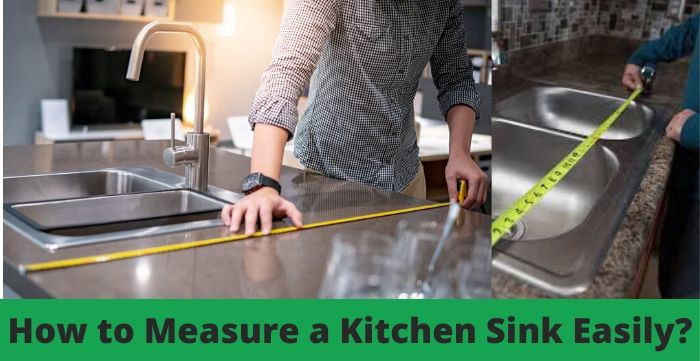 In today's modern homes, space is a valuable commodity.
Measuring for a new kitchen sink allows you to make the most out of your available space and optimize your kitchen layout.
Whether you have a small or large kitchen, choosing the right size sink can make a significant difference in the functionality and flow of your space.
In today's modern homes, space is a valuable commodity.
Measuring for a new kitchen sink allows you to make the most out of your available space and optimize your kitchen layout.
Whether you have a small or large kitchen, choosing the right size sink can make a significant difference in the functionality and flow of your space.
Durability and Longevity
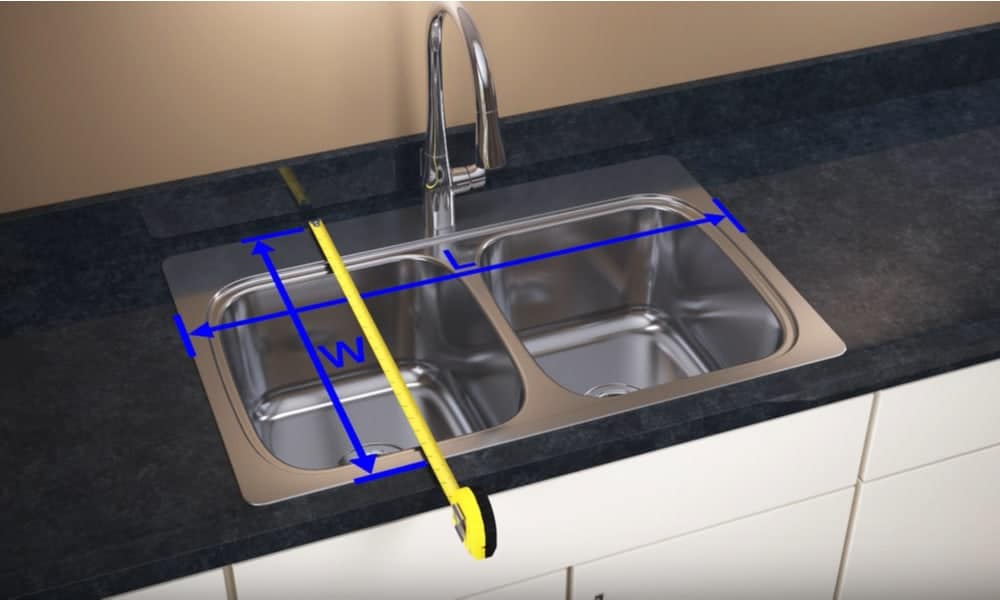 Investing in a high-quality kitchen sink means it should last for many years to come.
Measuring for a new sink ensures that it fits perfectly in your kitchen and is installed correctly, reducing the risk of any damage or wear and tear over time.
With proper care and maintenance, your kitchen sink can serve you for a long time, making it a worthy investment.
In conclusion, when it comes to designing your dream kitchen, every detail matters, and the kitchen sink is no exception.
Measuring for a new kitchen sink is a crucial step in the design process and should not be overlooked.
By considering the efficiency, aesthetic appeal, space optimization, and durability of your sink, you can create a functional and beautiful kitchen that you will enjoy for years to come.
Investing in a high-quality kitchen sink means it should last for many years to come.
Measuring for a new sink ensures that it fits perfectly in your kitchen and is installed correctly, reducing the risk of any damage or wear and tear over time.
With proper care and maintenance, your kitchen sink can serve you for a long time, making it a worthy investment.
In conclusion, when it comes to designing your dream kitchen, every detail matters, and the kitchen sink is no exception.
Measuring for a new kitchen sink is a crucial step in the design process and should not be overlooked.
By considering the efficiency, aesthetic appeal, space optimization, and durability of your sink, you can create a functional and beautiful kitchen that you will enjoy for years to come.

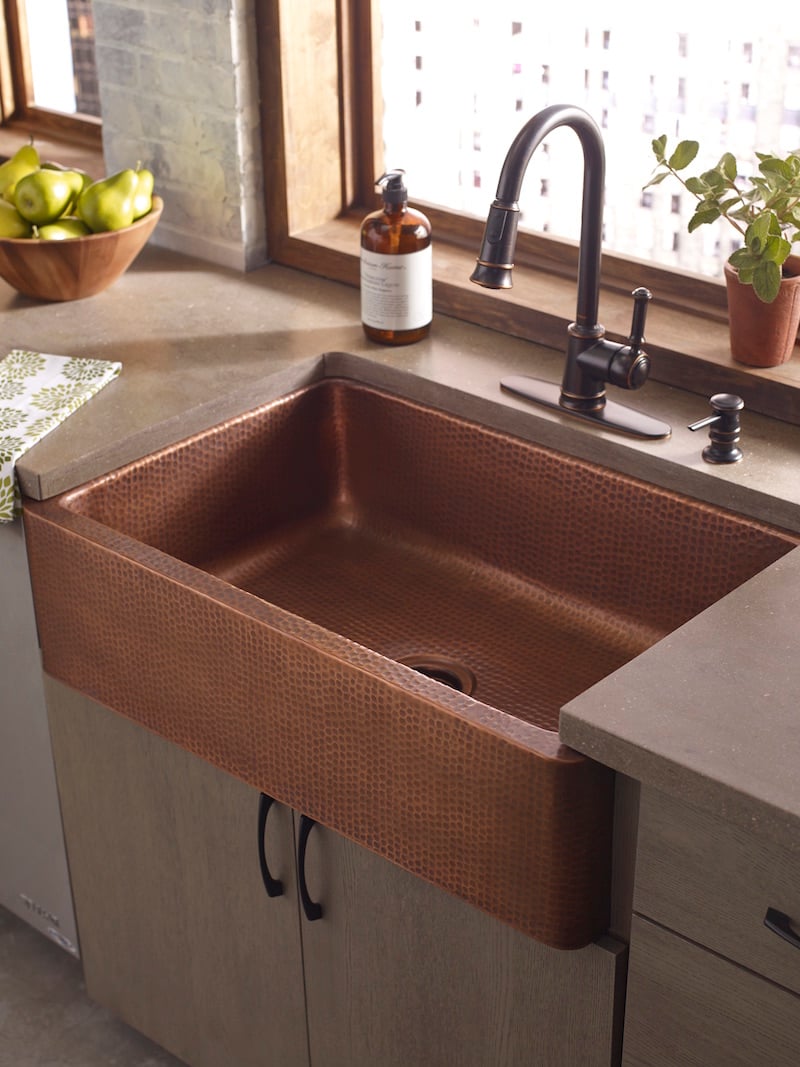




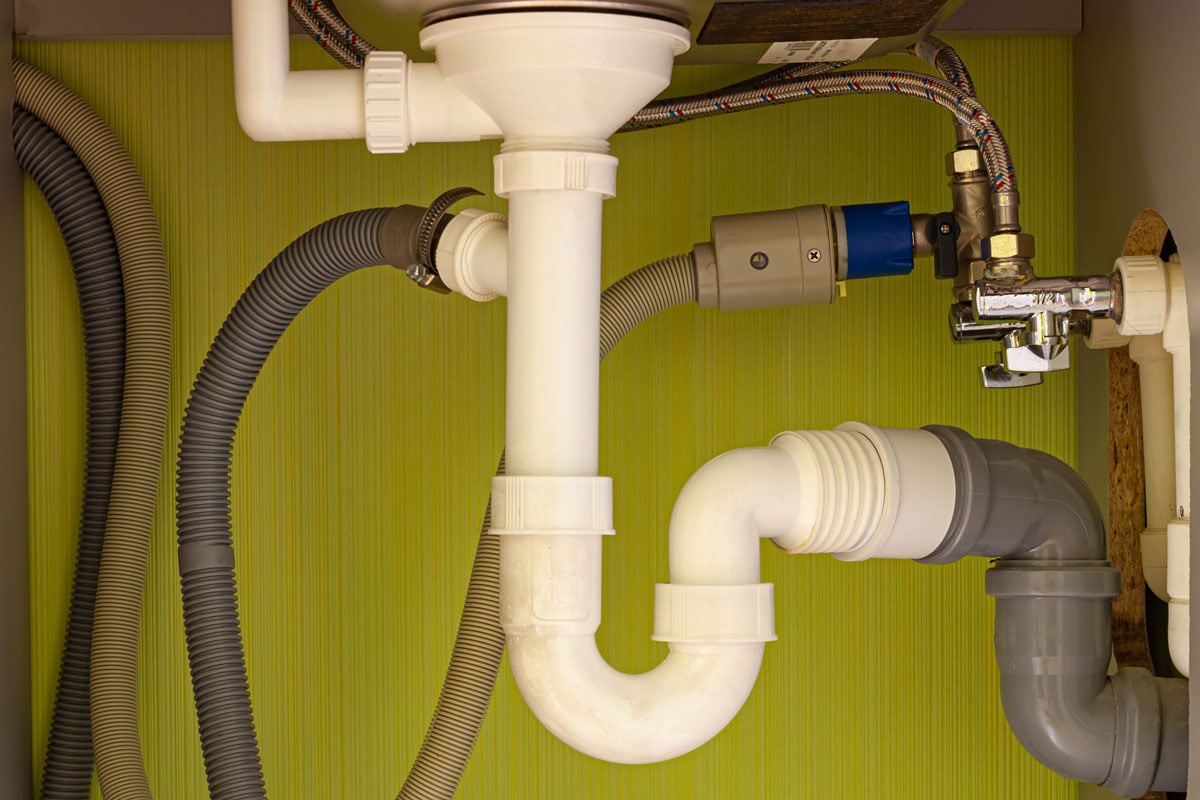

:no_upscale()/cdn.vox-cdn.com/uploads/chorus_asset/file/19495086/drain_0.jpg)






